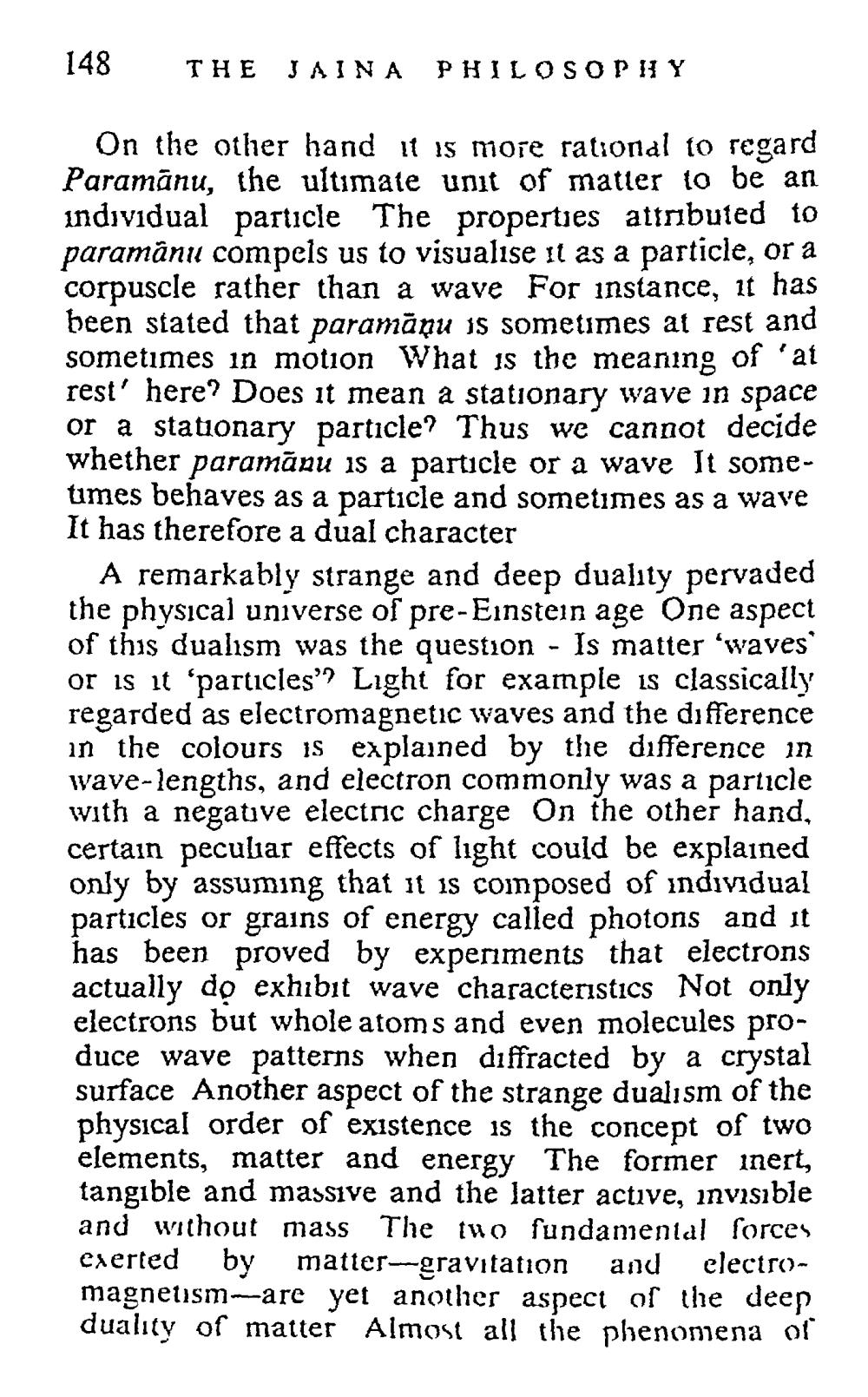________________
148
THE JAINA PHILOSOPHY
On the other hand it is more rational to regard Paramánu, the ultimate unit of matter to be an individual particle The properties attributed to paramânul compels us to visualise it as a particle, or a corpuscle rather than a wave For instance, it has been stated that paramāņu is sometimes at rest and sometimes in motion What is the meaning of 'at rest' here? Does it mean a stationary wave in space or a stationary particle? Thus we cannot decide whether paramānu is a particle or a wave It someumes behaves as a particle and sometimes as a wave It has therefore a dual character
A remarkably strange and deep duality pervaded the physical universe of pre-Einstein age One aspect of this dualism was the question - Is matter 'waves or is it 'particles'? Light for example is classically regarded as electromagnetic waves and the difference in the colours is explained by the difference in wave-lengths, and electron commonly was a particle with a negative electric charge On the other hand, certain peculiar effects of light could be explained only by assuming that it is composed of individual particles or grains of energy called photons and it has been proved by experiments that electrons actually do exhibit wave characteristics Not only electrons but whole atoms and even molecules produce wave patterns when diffracted by a crystal surface Another aspect of the strange dualism of the physical order of existence is the concept of two elements, matter and energy The former inert, tangible and massive and the latter active, invisible and without mass The tuo fundamental forces exerted by matter-gravitation and electromagneuism--are yet another aspect of the deep duality of matter Almost all the phenomena of




